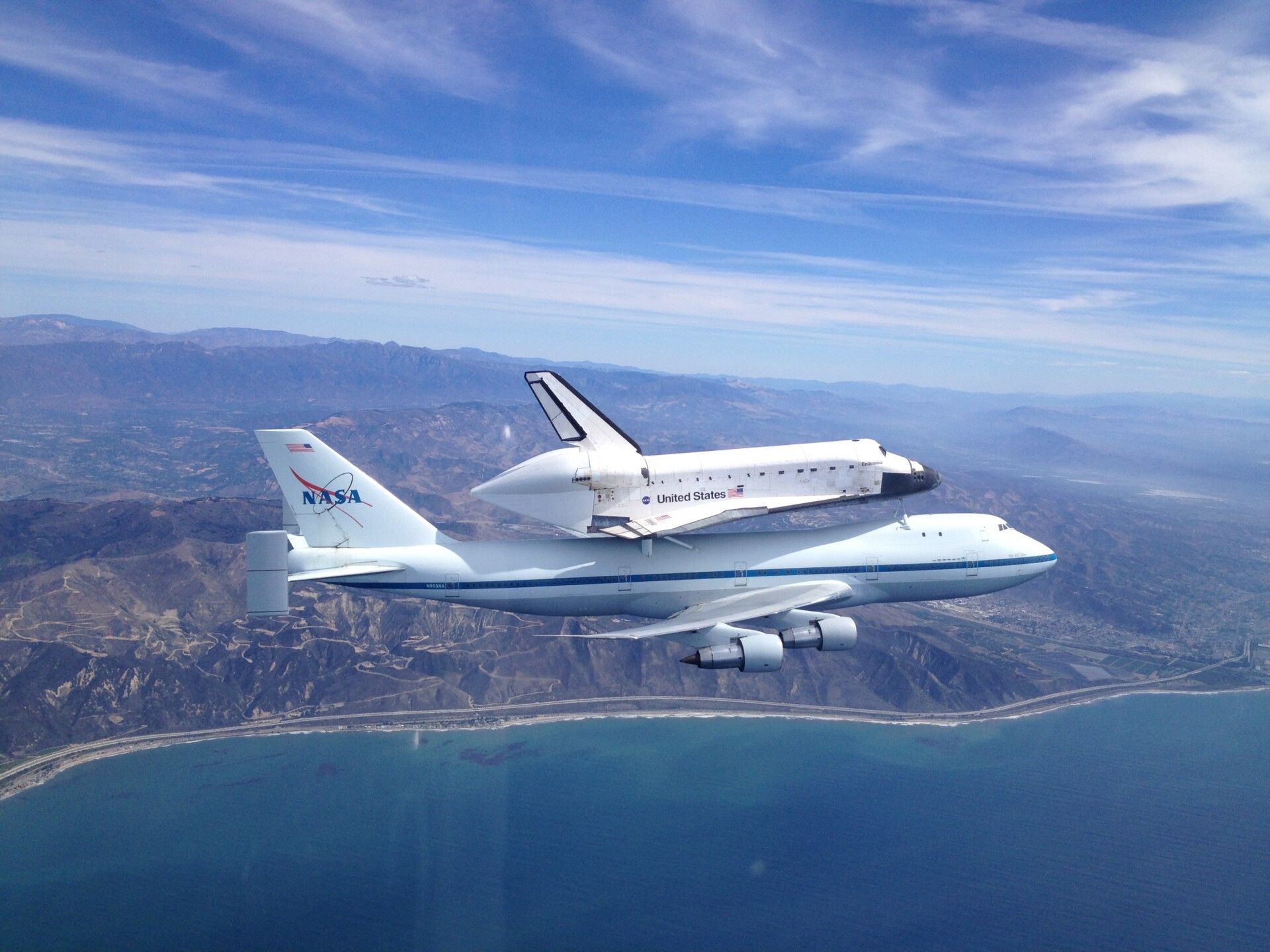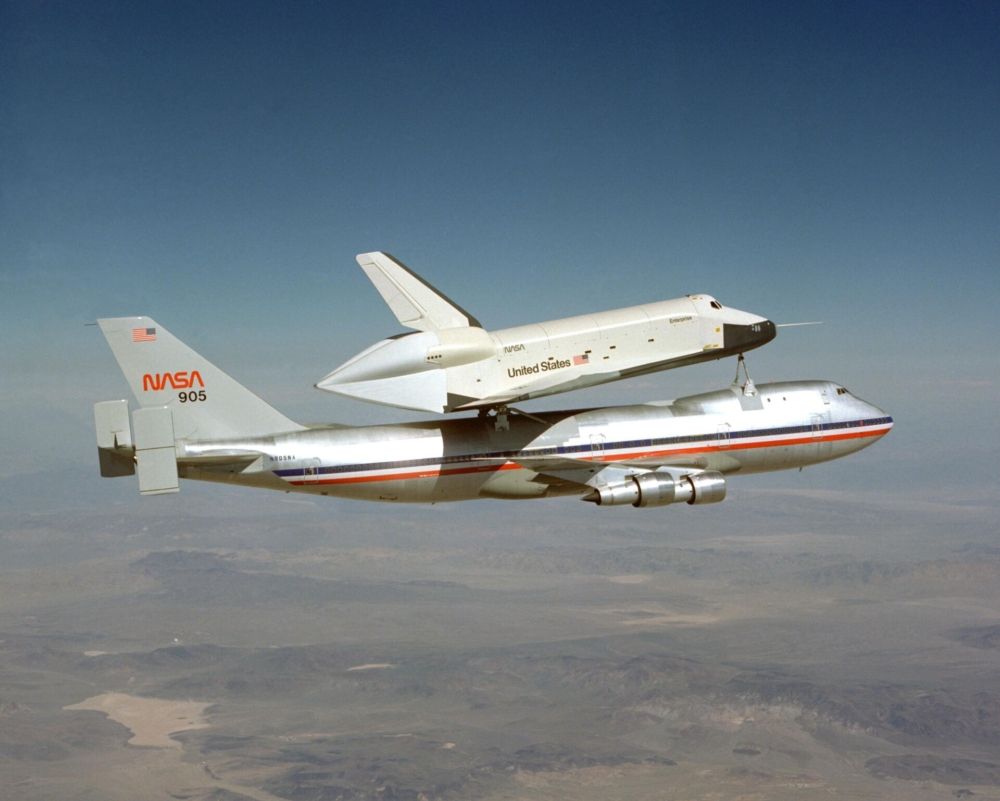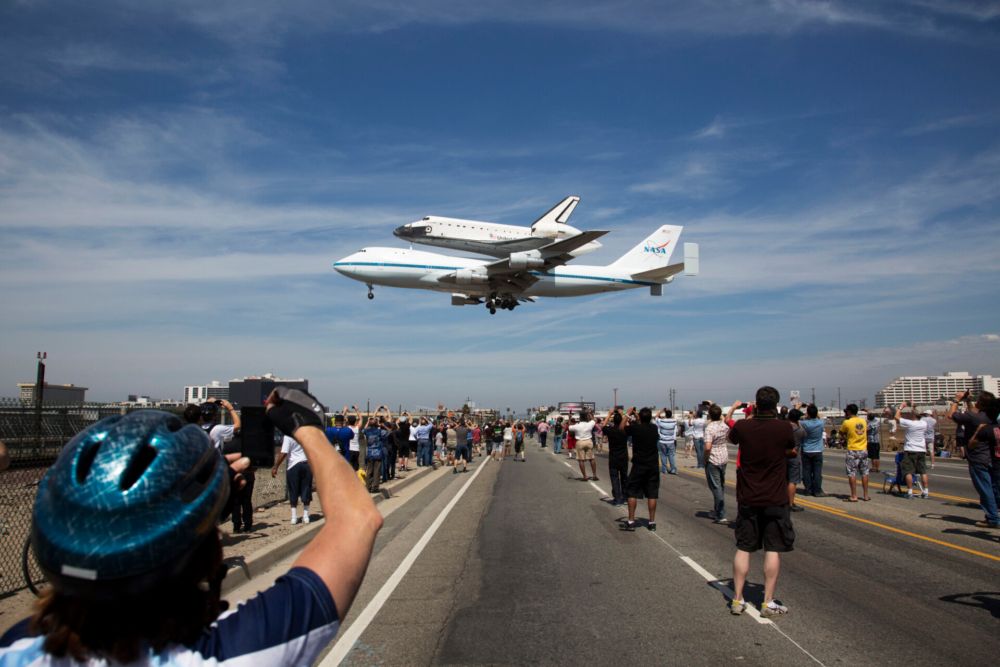For 30 years, NASA's Space Shuttle program carried out important space missions, enthralling viewers with fascinating visuals of the Space Shuttles during launch and re-entry. It was, therefore, equally exciting to see two specially modified 747s piggybacking the same shuttles around the country from one base to another. The iconic ferry flights came to an end nine years ago, when Space Shuttle Endeavour hopped on the 747 for one last time to travel to its final resting place in California.
Special jumbos
While the Space Shuttles could be transported by road for short distances, they relied on two highly modified Boeing 747-100s – called Shuttle Carrier Aircraft (SCA) – for long-distance journeys. There was no mistaking these jumbos for regular airliners with three struts protruding from the top of the fuselage and two additional vertical stabilizers.
They were also without any interior furnishings and fitted with instrumentations used by the SCA flight crews and engineers to monitor performance during ferry flights. The jumbos mostly carried the shuttles between Edwards Air Force Base, California and Kennedy Space Center in Florida.
The first of the two jumbos, N905NA, initially operated for American Airlines and was acquired by NASA in 1974. Initially, it was used for other research purposes before NASA began modifying it in 1976 for shuttle-carrying missions. The aircraft was withdrawn from service in 2013, a year after its final shuttle-carrying flight in 2012.
The second 747 started out with commercial operations with Japan Airlines and entered NASA's fleet in 1988 with the registration number N911NA. It flew its first shuttle-carrying mission in 1991, and its final flight, too, was in 2012, a few months before that of N905NA.
Stay informed: Sign up for our daily and weekly aviation news digests.
Final ferry flight
With the Space Shuttle program coming to an end in 2011, the SCAs began carrying the iconic shuttles to their resting places in museums and science centers. The final of such flights came on September 21st, 2012, with N905NA carrying Space Shuttle Endeavour from Cape Canaveral, Florida to Los Angeles (LAX), with a stopover at Edwards Air Force Base.
The celebratory flight took a victory lap over California, making low-level flybys over cities and landmarks. The pilots of the flight, Jeff Moultrie and Bill Rieke, carried Endeavour over iconic structures such as the Golden Gate Bridge in San Francisco, the State Capitol in Sacramento, and NASA's Ames Research Center at Moffett Field north of San Jose.
Office workers stood atop buildings cheering as the 747 flew above them, and two major roads leading to LAX were jammed as drivers got out of their cars to witness the iconic flight. Antonio Villaraigosa, then-Mayor of Los Angeles, greeted Endeavour on the airport tarmac, saying,
“Let me be the first to say, welcome to Los Angeles, Endeavour.”
Indeed, it was a befitting farewell to a remarkable Space Shuttle and the unique 747.
Where are they now?
The Space Shuttles and both 747s have been preserved and put on display for aerospace lovers. Of the six Space Shuttles built, Challenger and Columbia were unfortunately destroyed in accidents. The remaining four are at various locations across the US:
- Shuttle Atlantis – Kennedy Space Center Visitor Complex in Florida
- Shuttle Discovery – Steven F. Udvar-Hazy Center in Virginia
- Shuttle Endeavour – California Science Center in Los Angeles
- Shuttle Enterprise – Intrepid Sea, Air & Space Museum in New York City
Of the two 747s, N905NA was dismantled and sent for preservation to the Johnson Space Center in Houston, Texas, where it is on display with a replica Space Shuttle attached to it. The other one, N911NA, is on display at the Joe Davies Heritage Air Park in Palmdale, California.
The Space Shuttle program and iconic ferry flights may have ended, but enthusiasts can still visit these locations to get a glimpse of that bygone era.



